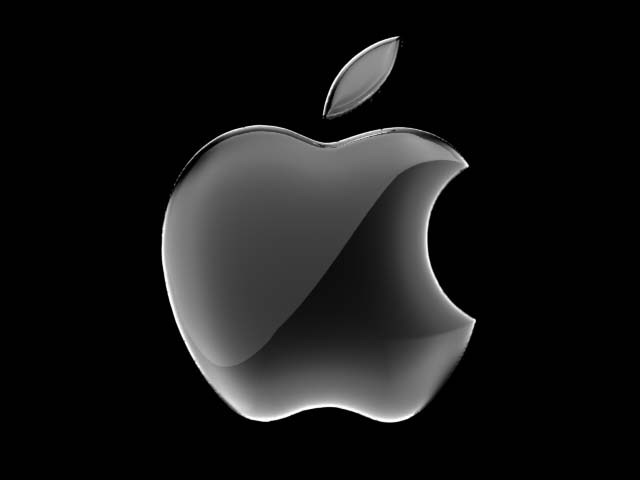Although details on the A5X are virtually non-existent until the teardown groups get at the new SoC and tell us what is inside, we do know that the A5X is a Dual Core (probably Cortex A9) SoC, with additional graphical capabilities provided by a PowerVR SGX543MP4. The amount of memory available to the SoC has more than likely increased from the 512MB in the iPad2; our guess is an increase to 1GB to help with that massive display. But what to make of Apple’s claims about being 4x faster than nVidia’s Tegra 3 SoC? It is true that the SGX543MP4 has four graphical cores inside its tiny silicon shell, which validates the claims that the new iPad has quad-core graphics. The issue now is what is Apple using for their comparison?
When the iPad 2 came out there were multiple comparisons of the iPad 2’s PowerVR SGX543MP2 against nVidia’s Tegra 2 (on a Motorola Zoom running Honey Comb). AnandTech ran the two against each other using GLBenchmark 2.0 and the PowerVR SGX543MP2 came out on top as the clear winner (with about 3.7 times the performance). Now looking over the testing there are a few things to note. The iPad 2 was running at a much lower resolution (1024x768) than the Xoom (1280x800). Additionally even Anand notes that due to differences in the operating systems it can never be a direct apples-to-apples hardware comparison. Android 3.0 did have frame rate issues as well as a nasty habit of throttling the SoC during game play. However, as that is what the consumer would have Anand could not simply root the Tablet and run the test. It would have been nice for them to do that just to show what the hardware is fully capable of and that the limitation might be the OS (but that is getting off the subject).
Apple’s claim of the A5 being 2x as fast as the Tegra 3 and the A5X being 4x came as nothing more than a slide with some 3D graphs. We did not get the benefit of any foot notes explaining how they tested, the competing hardware used (tablet and manufacturer name) which benchmarks were used. Nothing, just Apple’s say so on this one.
nVidia has responded asking for the benchmarks and test information to be made public which is a silly request. Apple almost never releases that type of information not to mention if they did it would be called into question anyway. nVidia also stated they will be picking up a new iPad and testing it. This will also be called into question and not taken seriously (which is also normal). We have asked nVidia for a comment, but have not heard back yet. Most of the internet is commenting that it is best to wait for the third party sites to test this out. We agree with a small caveat; the testing sites need to show not only stock “out-of-the-box” performance of the Tegra 3, but also what you can get from the hardware if you remove the frame rate limits (ICS is capped at 60) and the CPU/GPU throttling that happens in Android. The same thing should be done for iOS (if possible). At that point you are coming close to showing hardware Vs. hardware and removing the optimizations and limitations of the operating systems in use.
Still we have to give Apple credit on this one; they appear to have made a serious effort to up the performance bar on the new iPad. With a $500 price tag it is an expensive proposition. Apple will still sell millions of these, but with a large number of less expensive options out there we have a feeling that they might not sell as many as they could have if the competition was less. We also have to consider the fact that Windows 8 on ARM and x86 tablets will be hitting the market in Q4 of this year (2012). We could see this impact sales of the new iPad as some people might want to wait to see what Microsoft and their manufacturing partners have to offer with this new platform. It will be interesting to say the least.
Updated: 3-08-2012 11:28am
We have heard back from nVidia who had the following comment:
"It's nice to hear Apple compare themselves to Tegra 3. It truly underscores the importance of graphics, which is what we've been saying all along."
Disucss this in our Forum

 The internet was all a buzz with Apple’s announcement of “The New iPad” which is what Apple has decided to call the 3rd generation of the iPad instead of following a numerical progression or (as some thought) adding HD to the end. So far the technical specifications look impressive with a 2048 x 1536 display (with 264 ppi which is an odd number), a 5MP HD camera (1080p@ 30fps) and video stabilization, WiFi, and even 4G LTE capability. Under the hood Apple has an A5X SoC.
The internet was all a buzz with Apple’s announcement of “The New iPad” which is what Apple has decided to call the 3rd generation of the iPad instead of following a numerical progression or (as some thought) adding HD to the end. So far the technical specifications look impressive with a 2048 x 1536 display (with 264 ppi which is an odd number), a 5MP HD camera (1080p@ 30fps) and video stabilization, WiFi, and even 4G LTE capability. Under the hood Apple has an A5X SoC.

